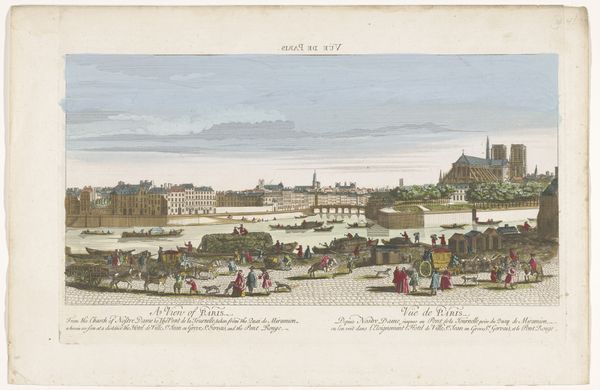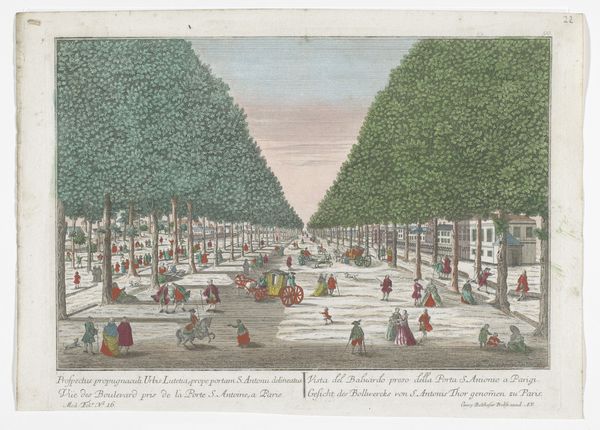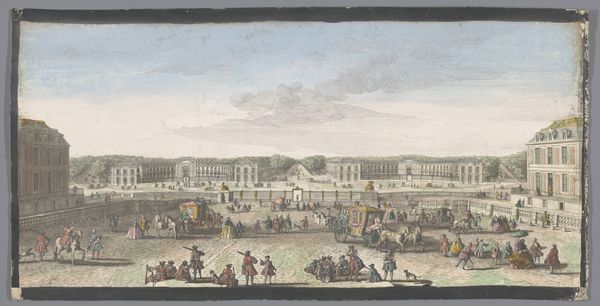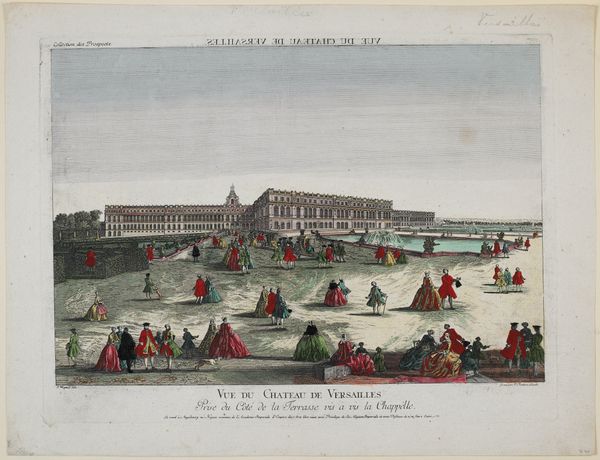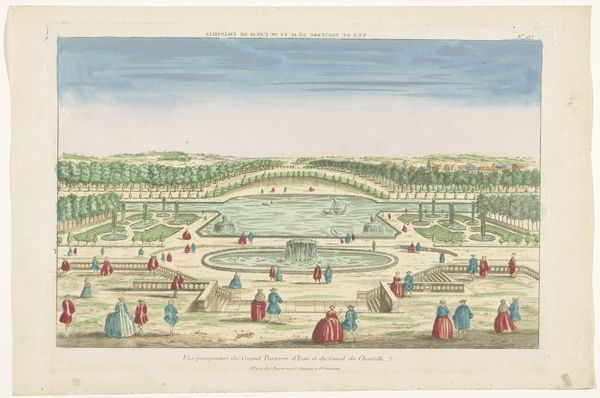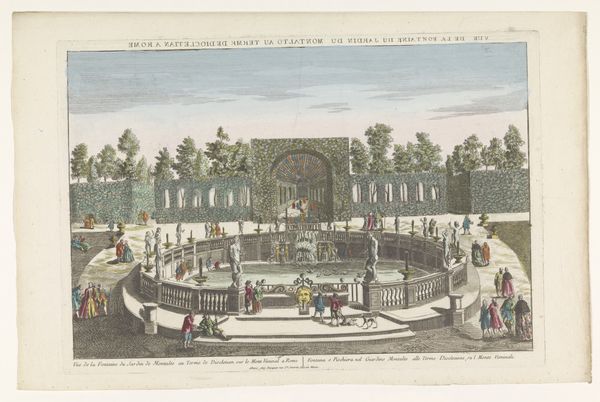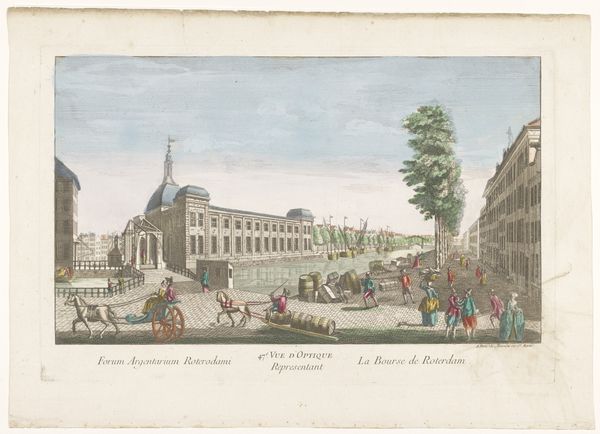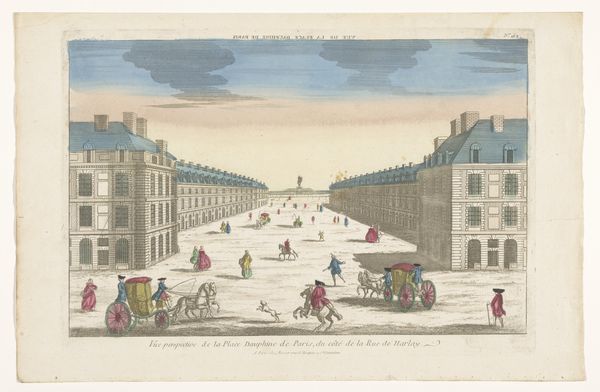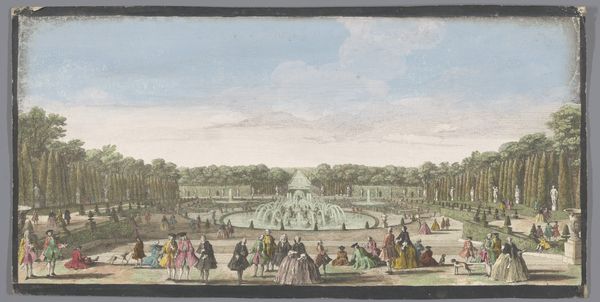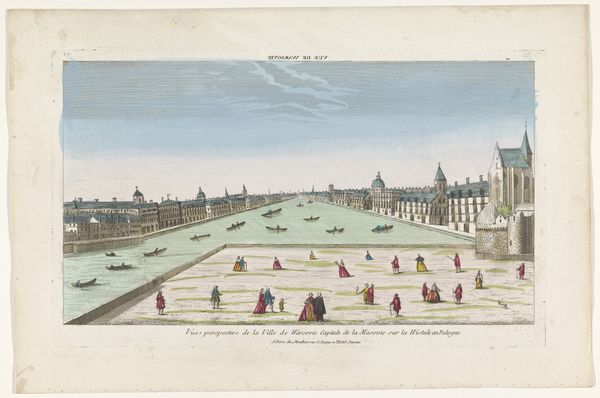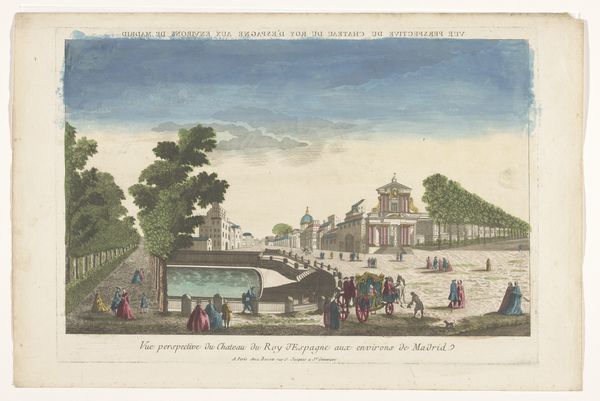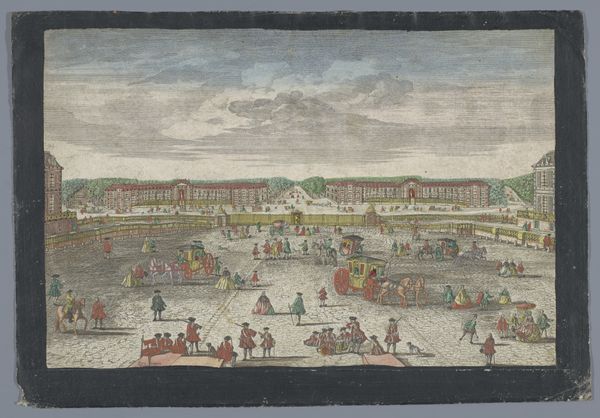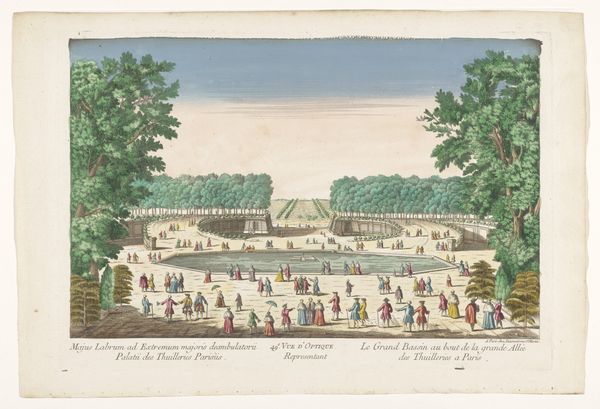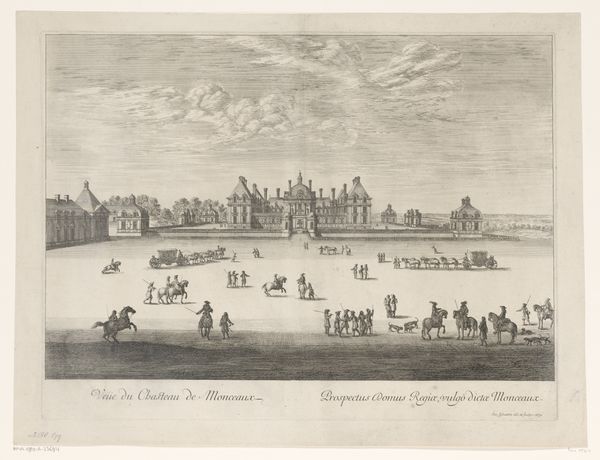
View of the Stables of Versailles from the Courtyard c. 18th century
0:00
0:00
drawing, hand-colored-etching, print, etching, paper, ink, engraving
#
drawing
#
hand-colored-etching
#
baroque
# print
#
etching
#
landscape
#
paper
#
ink
#
coloured pencil
#
france
#
cityscape
#
engraving
Dimensions: 12 1/2 x 16 3/4 in. (31.75 x 42.55 cm) (sheet)
Copyright: Public Domain
Curator: Jacques Rigaud’s hand-colored etching, “View of the Stables of Versailles from the Courtyard,” provides us with an 18th-century perspective on royal life in France. Editor: My first impression is one of organized chaos. The architecture is rigidly structured, yet the courtyard teems with figures in a surprisingly informal manner. I immediately consider the layers of labor that would have gone into building and maintaining a space like that. Curator: Indeed. Rigaud captures the architectural grandeur emblematic of Baroque ideals. The symmetrical arrangement, the precise lines, they all speak to the absolutist ambitions of the monarchy. Symbolically, Versailles became an embodiment of Louis XIV's power, projecting an image of order and control. Editor: It’s also interesting how this print democratized the image. Rigaud created a commodity depicting a spectacle of wealth, and that image itself became quite valuable in the market, materially speaking. Curator: It's fascinating how this scene, ostensibly about stability and the French court, is bursting with almost frenetic energy. Consider the roles assigned to each figure. The clothing they are wearing would have instantly signaled class, profession, allegiance. This symbolic representation shaped perception and perpetuated hierarchies. Editor: It also begs the question about who this piece was designed for. Clearly, the image aims to please and create an impression, likely targeting a burgeoning class interested in the aesthetic trappings of the monarchy. Were there other less flattering prints of Versailles circulating at the time? Curator: It makes you wonder. Looking at the small size and intricate detail of the work, I am left thinking about how it embodies a moment in time when power sought validation through art, reflecting the symbolic language of the court. Editor: For me, understanding this print deepens the conversation around accessibility to representations of power, and highlights the commodification of luxury in 18th-century France.
Comments
No comments
Be the first to comment and join the conversation on the ultimate creative platform.
